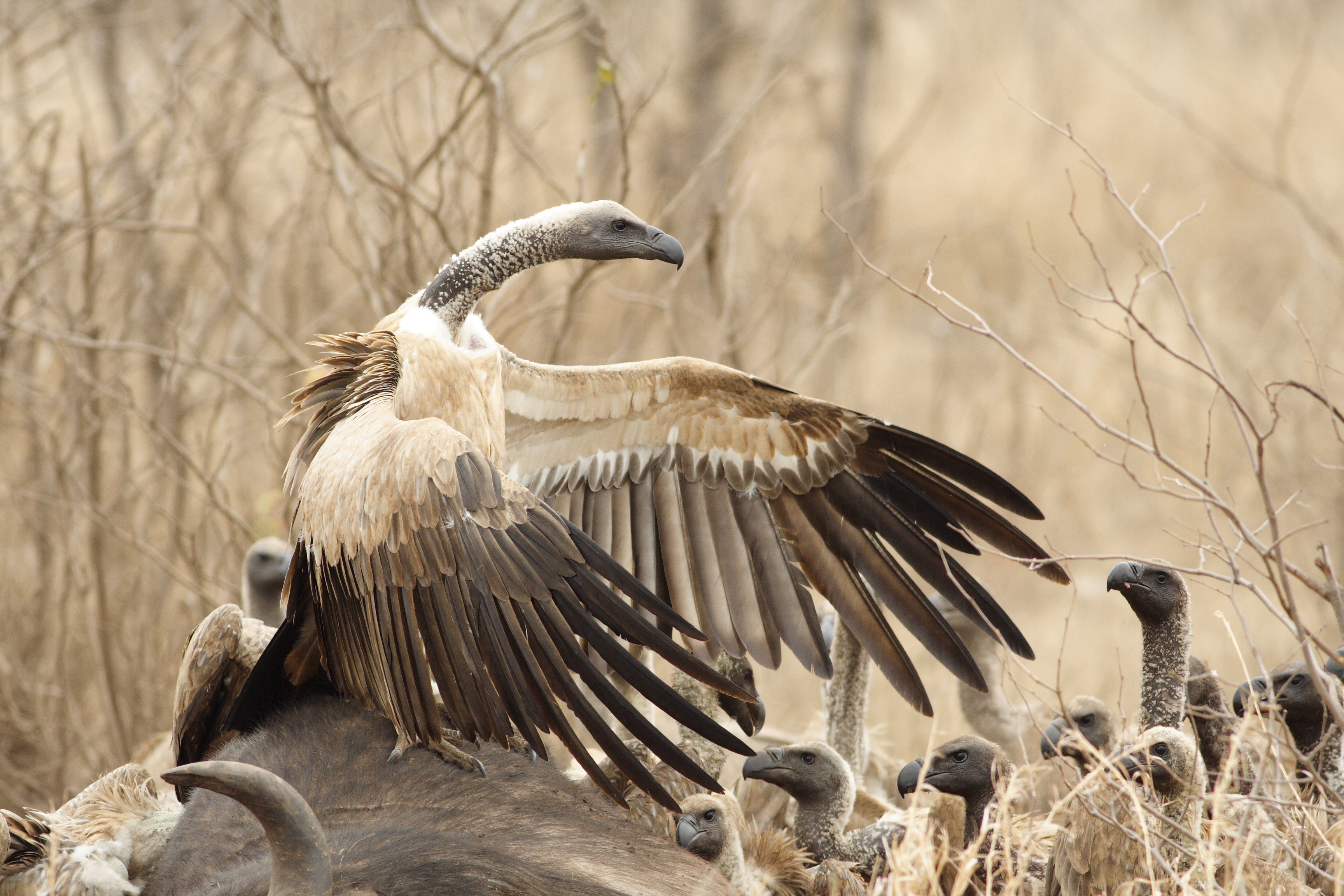
Guy writes:
Nature’s Clean-up Crew
Vultures sometimes get a bad press, but these majestic birds are essential in cleaning up our landscape. A biological recycling team, vultures play a vital role in clearing away carcasses and preventing the spread of diseases like anthrax, rabies, tuberculosis and botulism. However, worldwide, vultures are considered one of the most threatened groups of birds. In the seeming blink of an eye, we have seen the populations of vultures in India, Pakistan and Nepal crash catastrophically due to the veterinary drug diclofenac. Population declines of over 95% for three species have seen the loss of tens of millions of birds. However, there is now some hope as years of campaigning by conservationists, with government support, has lead to a ban on veterinary formulations of diclofenac. In an unwelcome twist, despite the hard lessons in Asia, it appears diclofenac may now be a risk to European vulture populations as well.
However, it is Africa where we are witnessing the next unfolding disaster for vultures. Africa supports 11 vulture species, eight are confined to the continent, the rest are migrants. Seven of these are on the edge of extinction, categorised as globally Endangered or Critically Endangered on the IUCN Red List of Threatened Species.
I photographed these African White-backed Vultures in Kruger National Park in 2009. Three young male lions had seemingly brought down two Cape buffalos and the carcases were by the roadside about 40 metres apart. Three very bloated and sleepy lions were crashed out next to the remains of one, whilst the vultures started to gather en masse to exploit the other. Occasionally a lion would rush across to scatter the birds, but they couldn’t seem to quite work out that all lying next to just one carcase was never going to be effective and the clean-up crew inevitably took over the scene. Most were White-backed vultures, along with a few Hooded, Lappet-faced and Cape Vultures. It did provide an amazing photographic opportunity, and I spent several hours taking photographs of the vultures and the lions.
African White-backed Vultures are traditionally the most widespread and common vulture in Africa. However, it has declined severely in parts of its range and suspected to have undergone a very rapid decline owing to habitat loss, declines in wild ungulates, hunting for trade & juju medicine, persecution, collisions and poisoning. Incredibly, since I took this photograph, this species has twice been reclassified by the IUCN, and is now listed as Critically Endangered. The other three vulture species present that day are also now classified as Endangered or Critically Endangered.
The ongoing slaughter of elephants for the illegal ivory trade is also having disastrous consequences. Vultures are being deliberately poisoned by poachers to avoid detection by wildlife authorities because their circling behaviour ‘sign posts’ the location of potential poaching incidents. In particular, the illegal use of the pesticide carbofuran, familiar here in the UK in relation to the poisoning birds of prey, is a massive problem in Africa. There have been a number of mass vulture poisonings and as recently as July a poisoned elephant carcass killed 94 white-backed vultures in Zimbabwe.
It can only be hoped that work by governments and conservationists will start to turn the tide in Africa for these amazing but much misunderstood creatures.
Image taken with Canon 350D at 1/1000 second with a Canon 400mm f5.6 L lens at f5.6 ISO 400.
[registration_form]
Gambia has perhaps the largest / stable br popln of G. africanus remaining in Upper Guinea -but with no money to investigate it . We certainly have the largest popln of hooded vultures anywhere in Africa …. bws CliveRB Birds of The Gambia